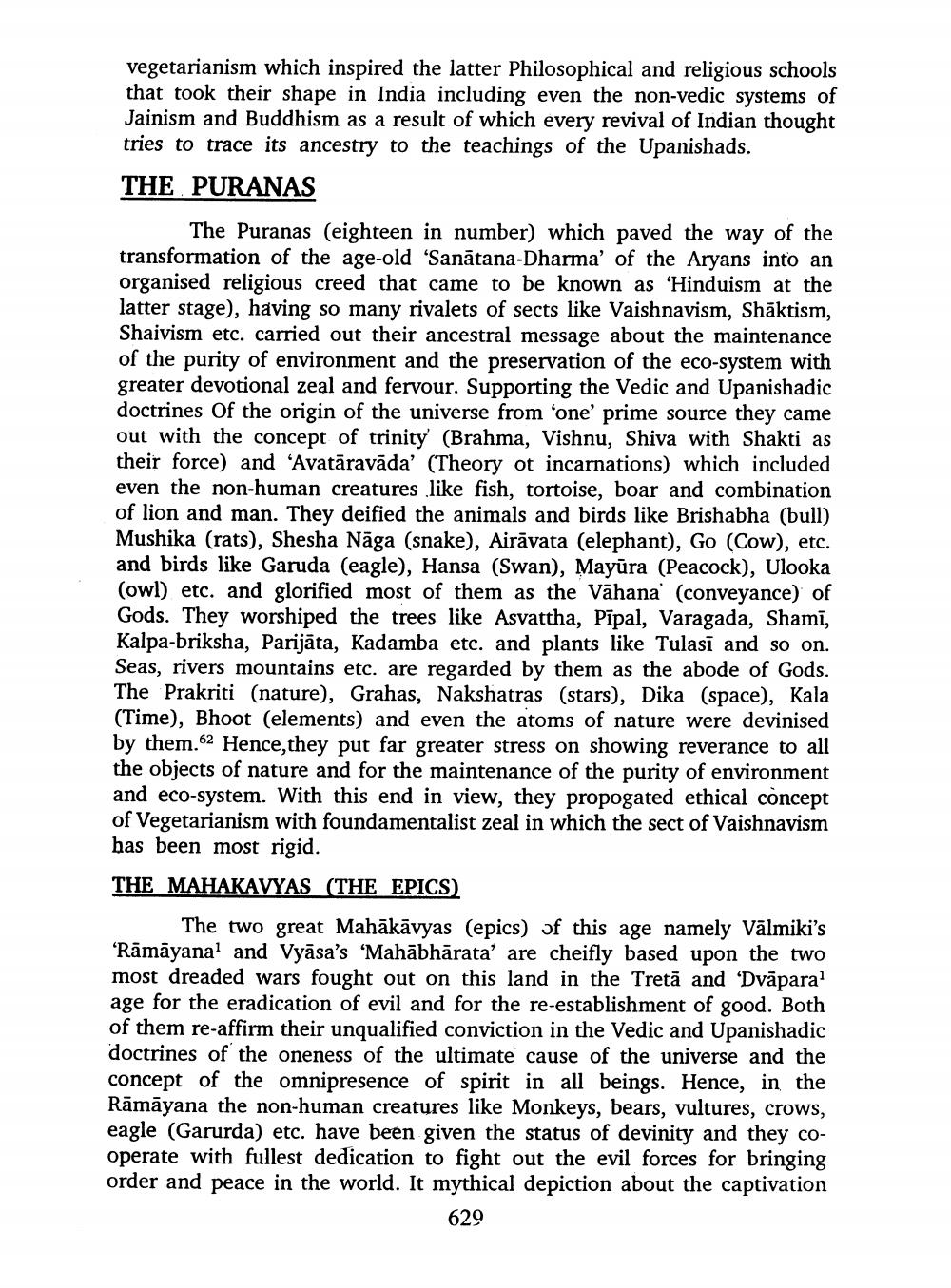________________
vegetarianism which inspired the latter Philosophical and religious schools that took their shape in India including even the non-vedic systems of Jainism and Buddhism as a result of which every revival of Indian thought tries to trace its ancestry to the teachings of the Upanishads. THE PURANAS
The Puranas (eighteen in number) which paved the way of the transformation of the age-old 'Sanātana-Dharma' of the Aryans into an organised religious creed that came to be known as 'Hinduism at the latter stage), having so many rivalets of sects like Vaishnavism, Shāktism, Shaivism etc. carried out their ancestral message about the maintenance of the purity of environment and the preservation of the eco-system with greater devotional zeal and fervour. Supporting the Vedic and Upanishadic doctrines of the origin of the universe from one prime source they came out with the concept of trinity' (Brahma, Vishnu, Shiva with Shakti as their force) and 'Avatāravāda' (Theory ot incarnations) which included even the non-human creatures like fish, tortoise, boar and combination of lion and man. They deified the animals and birds like Brishabha (bull) Mushika (rats), Shesha Nāga (snake), Airāvata (elephant), Go (Cow), etc. and birds like Garuda (eagle), Hansa (Swan), Mayūra (Peacock), Ulooka (owl) etc. and glorified most of them as the Vāhana' (conveyance) of Gods. They worshiped the trees like Asvattha, Pīpal, Varagada, Shamī, Kalpa-briksha, Parijāta, Kadamba etc. and plants like Tulasī and so on. Seas, rivers mountains etc. are regarded by them as the abode of Gods. The Prakriti (nature), Grahas, Nakshatras (stars), Dika (space), Kala (Time), Bhoot (elements) and even the atoms of nature were devinised by them.62 Hence, they put far greater stress on showing reverance to all the objects of nature and for the maintenance of the purity of environment and eco-system. With this end in view, they propogated ethical concept of Vegetarianism with foundamentalist zeal in which the sect of Vaishnavism has been most rigid. THE MAHAKAVYAS (THE EPICS)
The two great Mahākāvyas (epics) of this age namely Vālmiki's "Rāmāyana' and Vyāsa's 'Mahābhārata' are cheifly based upon the two most dreaded wars fought out on this land in the Tretā and 'Dvāpara? age for the eradication of evil and for the re-establishment of good. Both of them re-affirm their unqualified conviction in the Vedic and Upanishadic doctrines of the oneness of the ultimate cause of the universe and the concept of the omnipresence of spirit in all beings. Hence, in the Rāmāyana the non-human creatures like Monkeys, bears, vultures, crows, eagle (Garurda) etc. have been given the status of devinity and they cooperate with fullest dedication to fight out the evil forces for bringing order and peace in the world. It mythical depiction about the captivation
629




